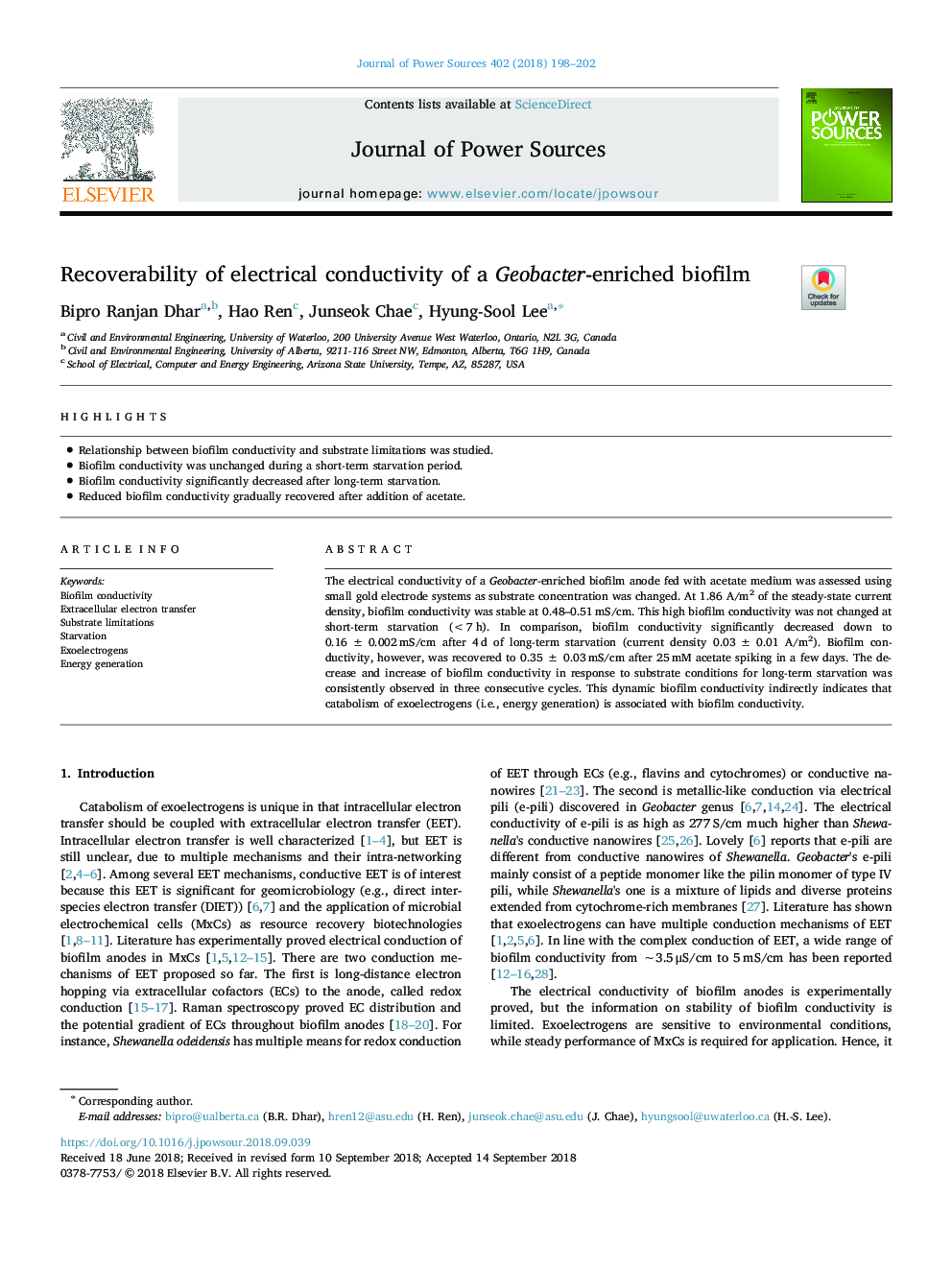| Article ID | Journal | Published Year | Pages | File Type |
|---|---|---|---|---|
| 10154695 | Journal of Power Sources | 2018 | 5 Pages |
Abstract
The electrical conductivity of a Geobacter-enriched biofilm anode fed with acetate medium was assessed using small gold electrode systems as substrate concentration was changed. At 1.86 A/m2 of the steady-state current density, biofilm conductivity was stable at 0.48-0.51â¯mS/cm. This high biofilm conductivity was not changed at short-term starvation (< 7â¯h). In comparison, biofilm conductivity significantly decreased down to 0.16â¯Â±â¯0.002â¯mS/cm after 4â¯d of long-term starvation (current density 0.03â¯Â±â¯0.01 A/m2). Biofilm conductivity, however, was recovered to 0.35â¯Â±â¯0.03â¯mS/cm after 25â¯mM acetate spiking in a few days. The decrease and increase of biofilm conductivity in response to substrate conditions for long-term starvation was consistently observed in three consecutive cycles. This dynamic biofilm conductivity indirectly indicates that catabolism of exoelectrogens (i.e., energy generation) is associated with biofilm conductivity.
Related Topics
Physical Sciences and Engineering
Chemistry
Electrochemistry
Authors
Bipro Ranjan Dhar, Hao Ren, Junseok Chae, Hyung-Sool Lee,
